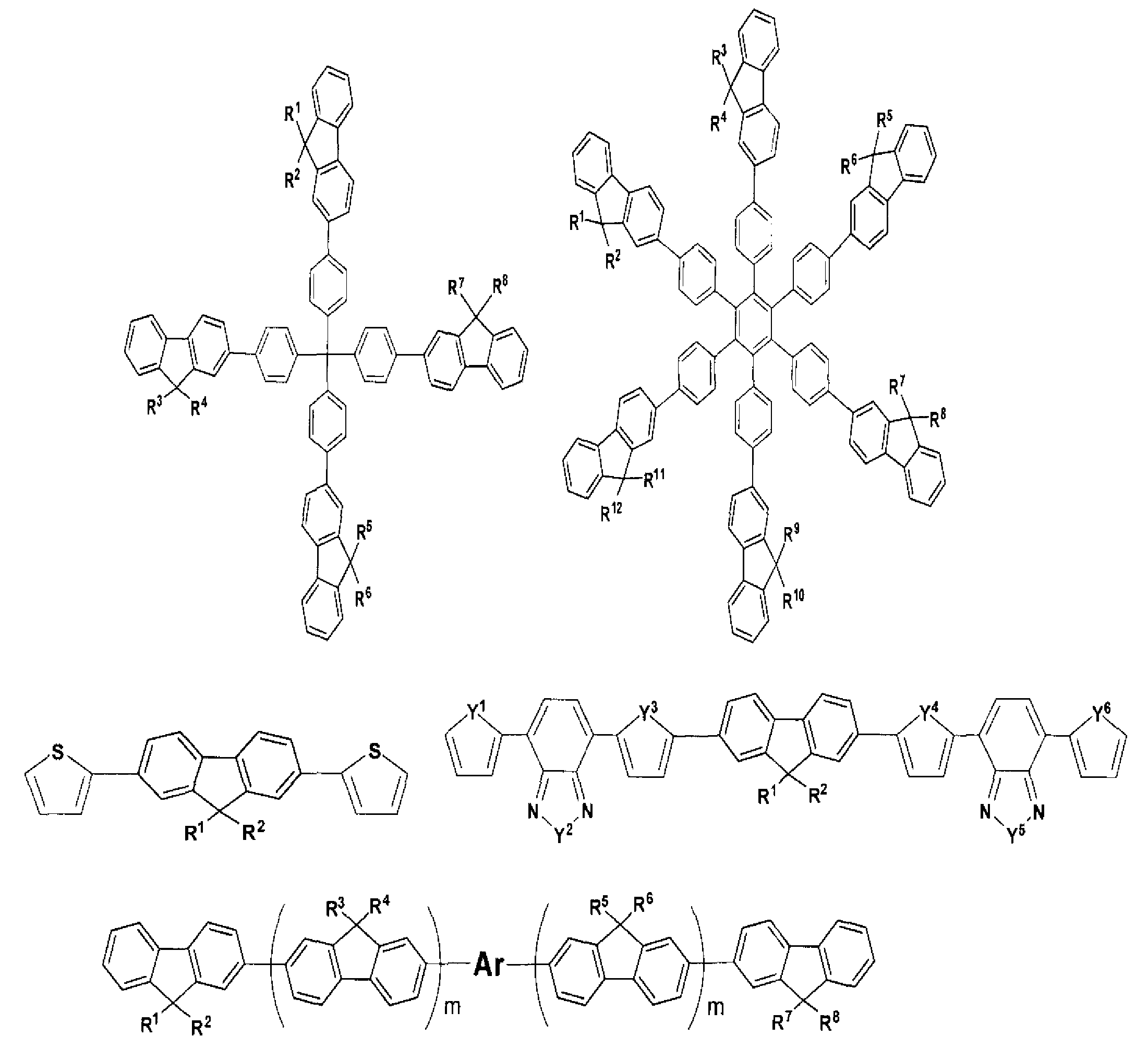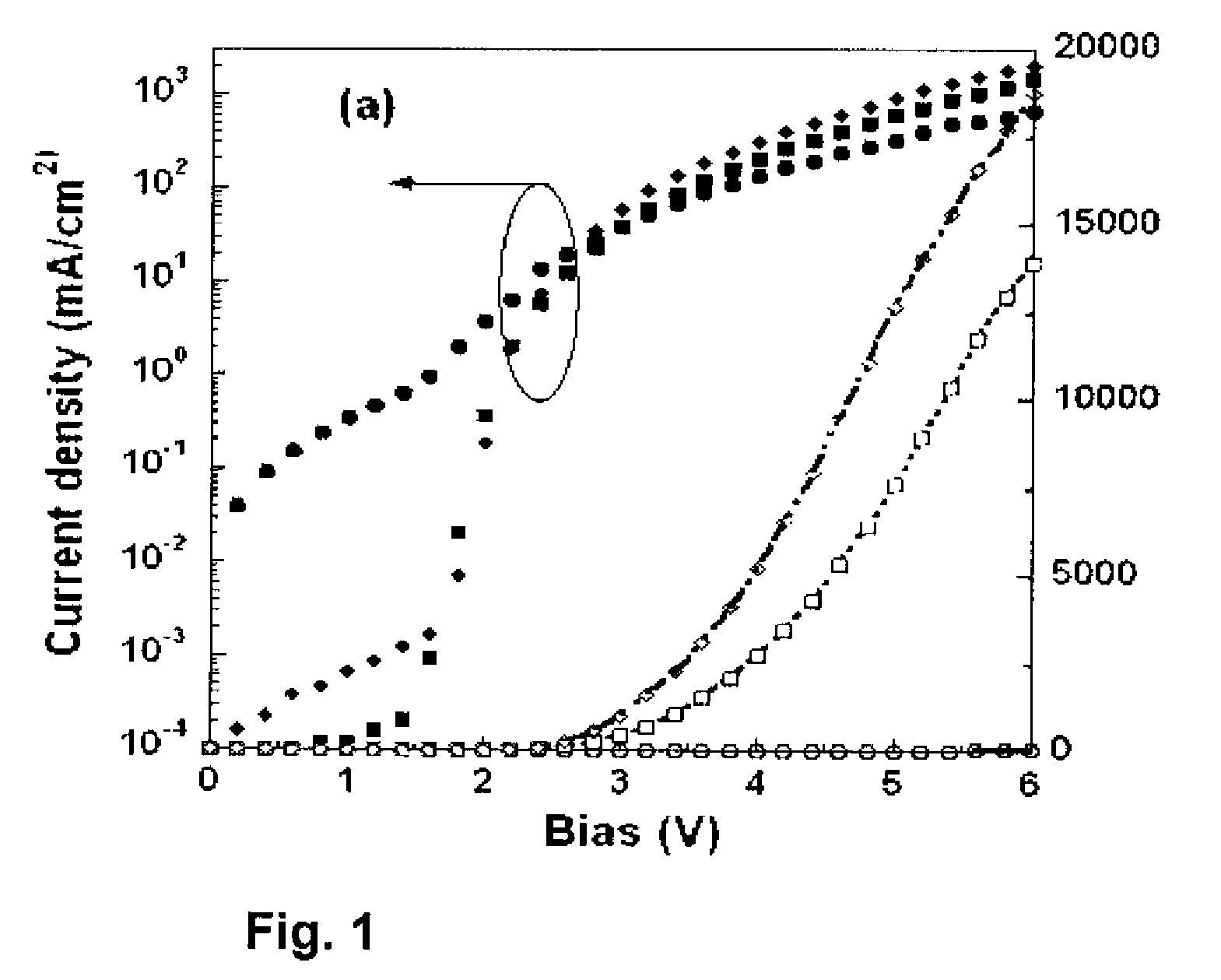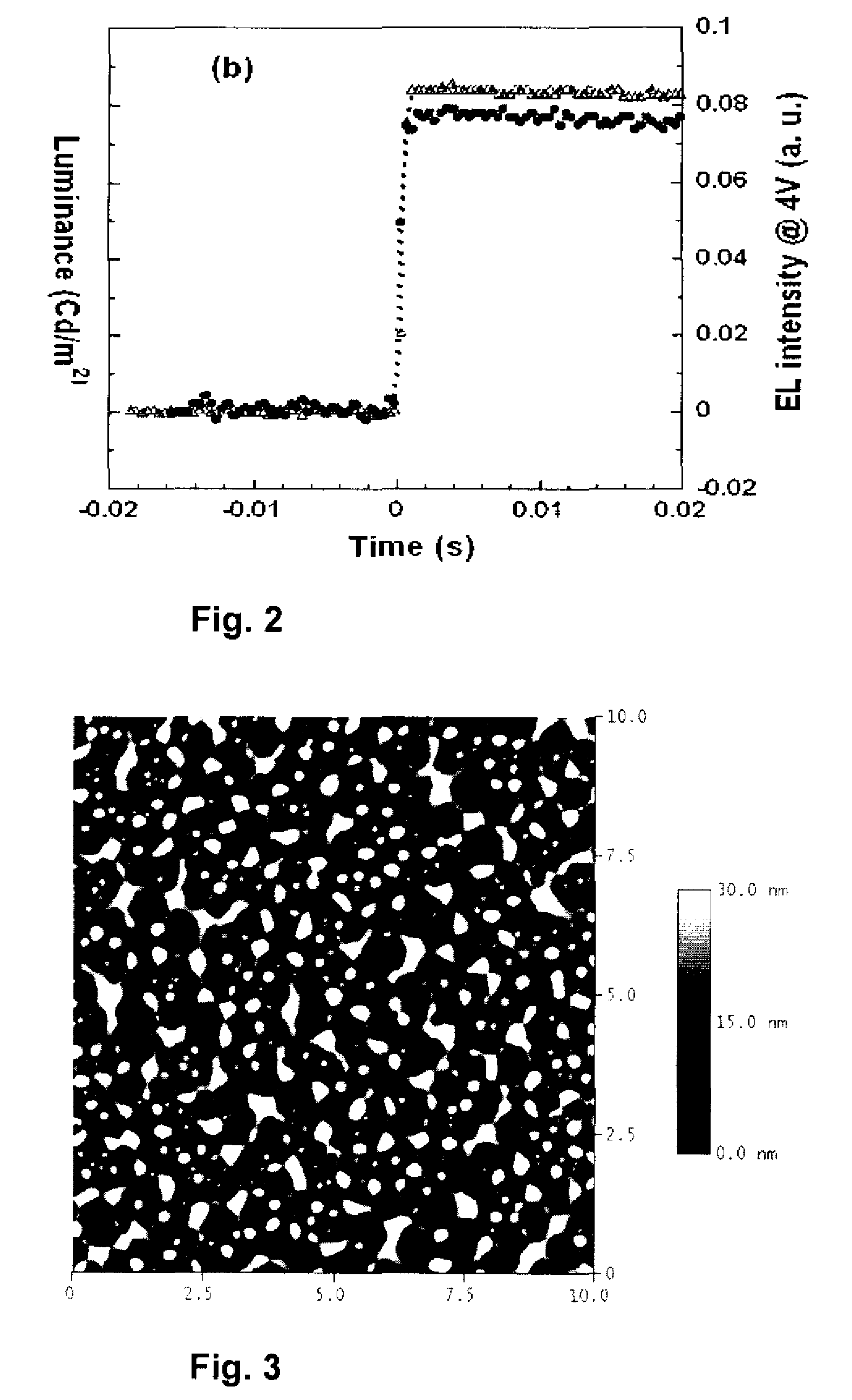Conjugated oligoelectrolyte electron transporting layers
a technology of electron transport layer and conjugated oligoelectrolyte, which is applied in the direction of organic semiconductor devices, non-conductive materials with dispersed conductive materials, organic compounds of 3/13 elements, etc., can solve problems such as multi-layer fabrication challenges, and achieve excellent function, improved purity, and better defined molecular structure
- Summary
- Abstract
- Description
- Claims
- Application Information
AI Technical Summary
Benefits of technology
Problems solved by technology
Method used
Image
Examples
example 1
Synthesis of FFF-BIm4
[0054]All commercial chemical reagents were obtained from Aldrich and used as received. The 1H and 13C NMR spectra were collected on a Varian ASM-100 400 MHz spectrometer.
[0055]2-Bromo-9,9-bis(6′-bromohexyl)fluorene (1). To a 150 ml of 45% aqueous potassium hydroxide was added 6.0 g (24.4 mmol) 2-bromofluorene, 59.3 g (0.244 mol) 1,6-dibromohexane and 0.78 g (2.4 mmol) tetrabutylammonium bromide at 75° C. The mixture was stirring for one hour, and then cooled down to room temperature. The aqueous layer was extracted with dichloromethane. The organic layer was washed with 1.0 M aqueous HCl, then brine and water, and dried over anhydrous magnesium sulfate. After removal of the solvent and the excess 1,6-dibromohexane under reduced pressure, the residue was purified by column chromatography on silica gel (eluent CH2Cl2 / hexanes, 1:15) to give white oil product 12.0 g (86%). 1H NMR (400 MHz, CDCl3). δ (ppm): 7.68 (br, 1H), 7.57 (br, 1H), 7.48 (d, 1H), 7.46 (d, 1H), ...
example 2
Light-Emitting Diode Fabrication
[0060]Devices were fabricated on pre-patterned indium-tin oxide (ITO) with sheet resistance 10-20Ω / □. The substrate was cleaned under ultrasonic conditions with detergent, de-ionized water, acetone and isopropanol. An oxygen plasma treatment was made for 20 minutes as the final step of substrate cleaning procedure. On the top of ITO glass a layer of polyethylenedioxythiophene:polystyrene sulfonic acid (PEDOT:PSS) film with thickness of 50 nm was spin-coated from its aqueous dispersion (Baytron P 4083, Bayer AG.), aiming to improve the hole injection and to avoid the possibility of leakage. PEDOT:PSS film was dried at 120° C. for 2 hours in the vacuum oven. The solution of emissive material, poly[2-methoxy-5-(2′-ethylhexyloxy)-1,4-phenylenevinylene] (MEH-PPV) in toluene, was spin-coated on top of ITO / PEDOT:PSS surface as emissive layer, which typical thickness was 70-80 nm. Then a thin layer of oligomer electrolytes FFF-BIm4 (Scheme 1) as an electron t...
PUM
| Property | Measurement | Unit |
|---|---|---|
| time | aaaaa | aaaaa |
| response time | aaaaa | aaaaa |
| temperature | aaaaa | aaaaa |
Abstract
Description
Claims
Application Information
 Login to View More
Login to View More - R&D
- Intellectual Property
- Life Sciences
- Materials
- Tech Scout
- Unparalleled Data Quality
- Higher Quality Content
- 60% Fewer Hallucinations
Browse by: Latest US Patents, China's latest patents, Technical Efficacy Thesaurus, Application Domain, Technology Topic, Popular Technical Reports.
© 2025 PatSnap. All rights reserved.Legal|Privacy policy|Modern Slavery Act Transparency Statement|Sitemap|About US| Contact US: help@patsnap.com



